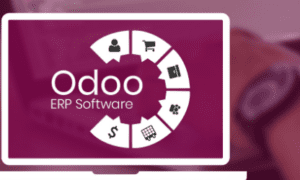Once you have mastered Odoo and installed it perfectly, you will no longer require anything else to run your business. As an open-source platform, it is embedded with a wide range of features and modules which are enough to manage each type of operation. Odoo implementation services cater to every type of business and adapt perfectly to the needs. Given its robust features, if you have decided to go for Odoo ERP implementation, you must know the step-by-step process.
Step By Step Guide to Odoo ERP Implementation
To ease your way, we have shared the steps in the most comprehensible ways. Let’s get started with them:
- Understand The Business Objectives
The primary step before Odoo ERP implementation is to understand your business objectives. This will expose your business’s strengths and potential weaknesses, based on which you can move forward with the requirements.
Despite being a business, each of them differs and Odoo offers modules to suit every business type. Ensure that the modules and features you are opting must support and boost your business. If there is any specific need that the features and modules are not able to meet with the requirements, you can leverage the customization feature.
- Create Your Odoo Team
Odoo is complex when it comes to managing and running its operation regularly, and you will have to hire a team of Odoo experts for the tasks. The team of members must have people who understand your business in and out. They must be the people who play the key role in your company like IT, sales, finances, and others.
There should be a project manager who can manage the operations and the system, an expert to manage the technical issues, an expert who can analyse and offer what the business demands and most importantly, the user, who will use the system as the result. Ensure that you hire the right people to build the team.
- Develop A Detailed Project
After you have already shortlisted the people to make your Odoo team, you need to now focus on developing a detailed project to execute the Odoo ERP implementation. While you are making your project, you must analyse your business, look for the area which is doing good, where you can excel, and analyse the areas that need focus regarding improvement.
When you have your pros and cons right in front of you, it gets better to divide the focus. Based on these, you can also make a system that addresses everything and creates a blueprint for your business.
- Customizing Odoo
Now comes the most crucial step of Odoo ERP implementation, the customization part. This step includes installing modules and features that align perfectly with your business and needs. You can assign the roles and the access levels of your company, but to do the customization, you will need an expert who excels at it and someone who knows all about your business.
You can also automate the tasks which are repetitive and require less human interaction with the customization features, giving you more time to invest in other areas. Do not underestimate the power of the Odoo customization as it can boost your business and take the performance to its optimum.
- Migration of The Data
Once you have set up the system, customise everything as per the business needs, add modules and features, and continue with migrating the data. You first have to format the data to align with the Odoo system. Sort out the data which is crucial for your company by cleansing the ones which no longer add value.
In this process, you can eliminate the data which is repeated, incomplete, and outdated. Odoo’s best feature is that it can easily be embedded with an existing database. Once you migrate, ensure that it doesn’t have any impact on the system and it works properly.
- Test And Implement
Once you are sure that you have set your objectives, customized them as per your needs, and have done what you need, you need to test and implement them. The testing phase has a few types like everything is working, the results are being produced and the final product is running smoothly.
The initial testing will determine all these and take the feedback from the real-time users to address any issue. Ignoring this step can result in disaster even if you are 100 percent sure. You never know what loopholes you might encounter so test the system and then implement it.
- Training Your Team
To manage the operations, you need to train the users as well to use the system efficiently. The training must be offered by experts and should be given to the employees you have selected to build the team. The training ensures that once the system is running, they can manage it without any issues. The training also comes with guides, helpdesk, and support for better learning. You can also incorporate the users’ feedback which can help you in better assessment helping with future training sessions.
- Go LIVE and Support
After you have done everything right, and have run the tests, you can finally opt for go LIVE. The few initial moments are crucial to understand if there is any issue with the system. A support team with experts must keep the system on analysis and if any issue is found, it must be taken care of immediately before it reaches any real-time customer.
A support system with a backup plan from the technical team is a must and should be ready with a problem-solving attitude if needed. The team should keep on checking with the continuous updates and keep on implementing them whenever needed.
The Odoo ERP implementation gets easier if you have a hold of the knowledge, but it is not easy to learn the technicalities in a day or two. If you are concerned about running your business smoothly, work with an Odoo implementation partner and get the system installed by them. In parallel, build a team of Odoo experts who can ensure your business doesn’t lag anywhere.

































